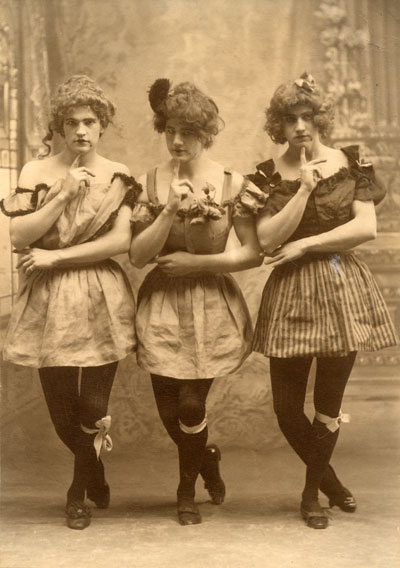Difference between revisions of "The Pink and the Blue: 1642-2004"
| Line 49: | Line 49: | ||
| − | Viewers of this exhibit are encouraged to add their comments. | + | Viewers of this exhibit are encouraged to add their [[Comments on The Pink and the Blue: 1642-2004| comments here.]] |
| − | |||
| − | |||
==Introduction by Jonathan David Katz,== | ==Introduction by Jonathan David Katz,== | ||
Revision as of 13:45, 6 October 2009
Lesbian and Gay Life at Yale and in Connecticut, 1642-2004
article in construction
THE PINK AND THE BLUE
Lesbian and Gay Life at Yale and in Connecticut, 1642-2004
An exhibit curated by Jonathan Ned Katz
With the research assistance of Brad Walters
Designed by Andrew Sloat
Sponsored by the Larry Kramer Initiative for Lesbian and Gay Studies at Yale University
Executive Coordinator, Jonathan David Katz
Sterling Memorial Library Memorabilia Room
February 7 – May 14, 2004
Introduction by Jonathan Ned Katz, Curator
This exhibit begins to piece together fragments of a history not yet written.
It moves chronologically from Connecticut’s early colonial laws mandating death for “sodomy” to the first stirrings, at Yale, of the modern homosexual-rights movement, to the recent development of the Kramer Lesbian and Gay Studies Initiative. It includes stories of individuals and accounts of political organizing.
This is history with a human face, a tale of individual and collective action to make the changing social world.
Spanning 362 years, and focusing on about sixty people and events, this exhibit is, of course, incomplete. It does provide a first, tantalizing glimpse of tales that involve law, religion, morality, medicine, public health, politics, education, immigration, African-American and white culture, and women’s and men’s social lives. It presents materials relevant to transgender, bisexual, gay, and lesbian concerns.
This history illuminates the changing social organization of genders, sexualities, and intimacies, their place in the larger social world, and the evolving reactions of that larger world.
This is a history still in the making. The evidence here can be amplified and analyzed in dozens of undergraduate term papers and graduate-school theses.
Viewers of this exhibit are encouraged to add their comments here.
Introduction by Jonathan David Katz,
Executive Coordinator, Larry Kramer Initiative
As this exhibition makes clear, it is impossible to conceive of a Yale University absent its lesbian and gay past. Building on that past—and occasionally in spite of itself—Yale has emerged at the center of the scholarly and institutional development of lesbian and gay studies today. With the advent of the Larry Kramer Initiative for Lesbian and Gay Studies, which brings you this exhibition, Yale’s storied gay and lesbian history now has a dedicated home.
Yale has been responsible for a long list of historic contributions to lesbian and gay scholarship in the United States, which includes everything from founding the first lesbian and gay studies national conferences to establishing the Larry Kramer Initiative itself. With this, the first exhibition to examine the specifically lesbian and gay (and bisexual and transgendered) history of a major institution of higher education in the United States, Yale continues yet another of its celebrated traditions.
